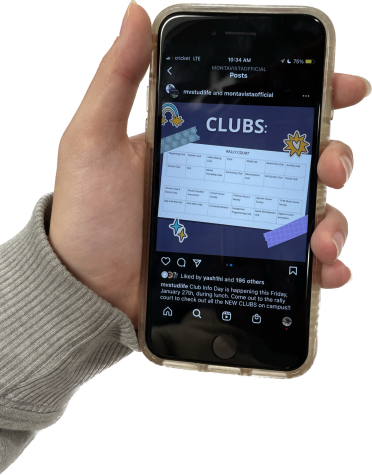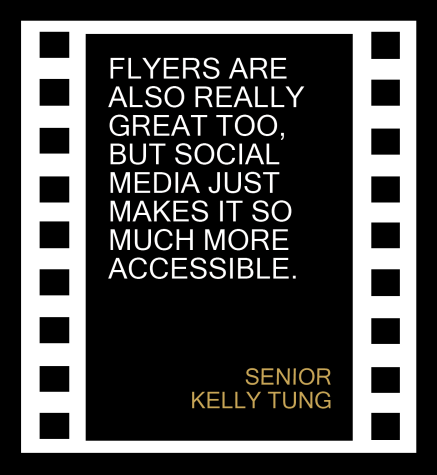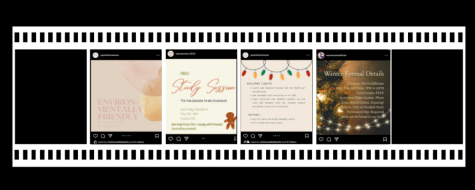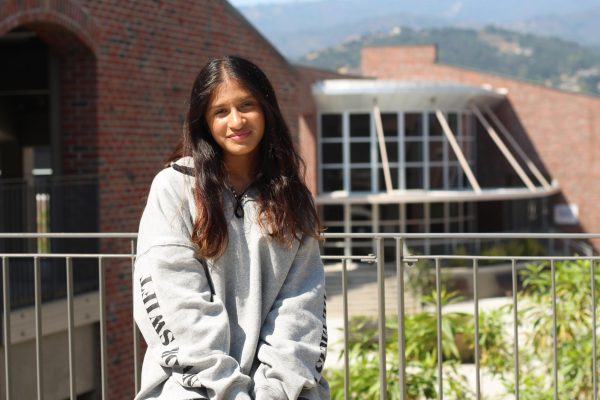What’s your Insta?
Analyzing the evolution of social media as a primary source of news and information
February 17, 2023

From a casual photo sharing application to a billion-user platform currently being utilized by many major corporations and celebrities, Instagram has come a long way since its 2010 establishment. For senior and class of 2023 class president Kelly Tung, Instagram is an effective tool for promoting school events to students.
“A lot of the events that we promote, we do through social media,” Tung said. “While I do still think word of mouth is really important for creating hype for these events and ensuring that friends encourage each other to come, social media is really important for taking that first step. Flyers are also really great too, but social media just makes it so much more accessible.”
Because Instagram is the prime site for distributing event-related information, Tung says students without Instagram are more prone to missing out on essential details like event price, timing, date and location.
Having downloaded Instagram in the beginning of her sophomore year, sophomore Prisha Balan agrees with Tung and states how having Instagram has made her more aware of school events.
“My involvement hasn’t really changed — it’s more of my awareness,” Balan said. “[For events] like Winter Formal, I’d see a poster here and there [at] school, but it would go off my mind. But the constant advertising of ‘buy tickets, buy tickets’ just puts it at the back of your mind so you are more aware of the fact that it is happening.”

According to Bay Area News reporter and MVHS alum Cam Inman ‘89, the transition into using social media for the spread of information has also influenced journalism, increasing connectivity between journalists and readers, and also serving as a platform for journalistic work to be spread to a larger audience. Instagram is the site Inman predominantly uses to post his content, with his account @49ers.cam amassing over 100,000 followers.
“Social media offers multiple ways for reporters to both spread and gather information,” Inman said. “My Instagram channel has grown to nearly 100,000 followers in the past decade, and that is twice as many as Twitter, with a different clientele. So I’ll share videos, stories, posts and links to get word out that way.”
Tung agrees with Inman, stating how having an Instagram can also grant organizations a relatively-established audience that can grow through their posts.
“When I first downloaded Instagram, I saw it more like a messaging tool or [for] keeping updated with my friends,” Tung said. “But I’ve seen an increase in content creators or nonprofits like mine trying to grow their platform via social media, and I think that’s amazing because it really diversifies the audience and the content that you’re engaging with.”
The growing accessibility to information is made possible by social media, but Inman mentions that this also opens the door to other issues, such as the spread of misinformation.
“It’s fantastic that so much information is out there, in various channels such as IG, Twitter, Snapchat [and] YouTube,” Inman said. “It’s also extremely perilous in that misinformation can spread like wildfire and create false stories. If someone had no social media, they could revert to the actual Internet and seek out stores on newspaper websites, such as MercuryNews.com.”
According to Balan, social media can also be detrimental due to its toxic and addictive nature. While Balan says that Instagram’s heavy emphasis on unrealistic beauty standards creates toxicity, she also states how it can serve as a distraction, which is why her parents only recently allowed her to download the app.
“[My parents] felt like it was a very heavy influence on teens especially, and they thought that it would be distracting with schoolwork, so until I got to an age of mental maturity where I was able to handle that kind of a distraction, my parents thought I shouldn’t have it,” Balan said. “Before I got it, I thought of it simply as a method of networking and being able to keep in touch with friends. But now that I got it, I’ve seen how toxic it is and how much it truly can impact one’s mental nature.”

Senior George Gino agrees with Balan, stating how social media’s addictive nature can make it unappealing. For Gino, social media’s primary use is communication, particularly among other members of the MVHS Robotics Team on the MVRT Discord server. However, Gino downloaded Instagram during his senior year of high school, stating how although he does not find himself addicted to the platform, it can be useful for communication due to its popularity.
“At first, I didn’t really want it, and then more and more people started to get it and that was one [platform] where everyone had,” Gino said. “And so I guess, this is the time for it, right? Like I’m gonna get it eventually, why don’t I get it now?”
With social media increasingly growing in its popularity and thus its audience, users are encouraged to adapt along with it, downloading each new trending app to keep up in both professional and personal circles.
“Social media is constantly evolving and it’s imperative journalists adjust to the multitude [of] ways people seek content,” Inman said. “Twitter was my main outlet on social media for many years, but now Instagram has overtaken that, and, perhaps, I’ll convert to YouTube in the coming years. Heck, maybe in a year I may be reduced to just posting a photo and a caption on BeReal to appeal to short-attention span readers/viewers.”


















